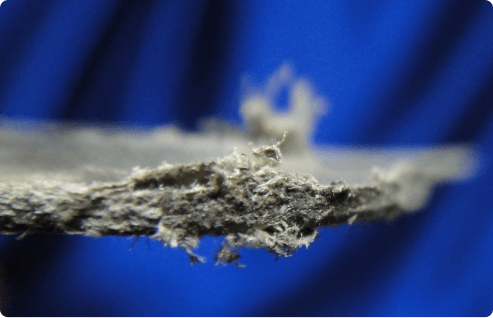EPA Finalizes Comprehensive Asbestos Reporting Rule
Legislation & LitigationWritten by Michelle Whitmer | Edited By Walter Pacheco

On July 6, the U.S. Environmental Protection Agency announced its final rule requiring comprehensive reporting on asbestos. The new directive, issued under the Toxic Substances Control Act, requires importers and manufacturers of asbestos-related products to report use and exposure information from the past four years.
The reporting rule comes out of the EPA’s Risk Evaluation of Asbestos Part 2, which is focusing on legacy asbestos and disposal. This includes details about any products containing the carcinogenic mineral and applies to all six types of asbestos. Data acquired from this new rule will help inform and guide the EPA’s actions in the future.
“We know that exposure to asbestos causes cancer and other serious health problems that still result in thousands of people dying every year, and today we’re continuing our work to protect people from this dangerous chemical,” said Michal Freedhoff, assistant administrator for the Office of Chemical Safety and Pollution Prevention, in the EPA announcement.
Under the new rule, any manufacturer, importer or processor who handled asbestos between 2019 and 2022 and had annual sales of $500,000 or above during those years must report certain exposure-related information. That includes quantities of asbestos, types of use and employee data.
The new reporting rule also applies to any products that contain asbestos as an impurity, such as asbestos-contaminated talc. Companies subject to the rule have nine months to collect all data and submit it to the EPA.
EPA’s Asbestos Risk Evaluation
Part 1 of the Risk Evaluation of Asbestos was released in December 2020 and focused mostly on chrysotile asbestos. It didn’t consider legacy uses of the mineral, meaning asbestos that can still be found in older buildings and products. Part 2 of the risk evaluation, which does focus on legacy asbestos, is set to be published by Dec. 1, 2024.
Exposure to asbestos is the primary cause of mesothelioma. This rare and aggressive cancer usually develops decades after repeated exposure to the mineral. The disease can affect the linings of the lungs, abdomen, heart and testes. The average mesothelioma patient has a life expectancy of 12 to 21 months.
Ten states, Washington, D.C., and several health and advocacy organizations have sued the EPA to begin the process of strengthening asbestos oversight. One of the organizations that filed a lawsuit against the EPA is the Asbestos Disease Awareness Organization. The nonprofit group is dedicated to preventing asbestos-related diseases. In 2018, the ADAO also filed a petition in hopes of making companies more accountable for asbestos use.
“I vividly remember the impactful moment when our Right to Know petition was submitted to the EPA on Mesothelioma Awareness Day in 2018, aiming to hold companies accountable for the import and use of asbestos,” Linda Reinstein, president and co-founder of the ADAO, told The Mesothelioma Center at Asbestos.com. “After nearly four years, we are thrilled and proud to have achieved a significant legal victory with the implementation of the EPA’s final Asbestos Reporting Rule.”
Ban of Chrysotile Asbestos Still Under Advisement
In 2022, the EPA proposed a ban on chrysotile asbestos, the only remaining type still being imported into the United States. Chrysotile asbestos can be found in many products and items in homes and buildings, including:
- Adhesives
- Appliances
- Automobile brake linings
- Boiler seals
- Ceilings
- Cement
- Drywall
- Ducts
- Floors of homes and businesses
- Gaskets imported into the U.S.
- Insulation for pipes
- Roofing
- Sheet gaskets
- Vehicle friction products
- Vinyl tiles
- Walls
Chrysotile is also known as “white asbestos” and was once produced in the U.S. and Canada. It accounts for 95% of all asbestos nationwide. According to Australia’s Asbestos Safety and Eradication Agency, the mineral is hazardous to humans and no amount is safe.






